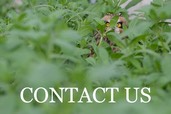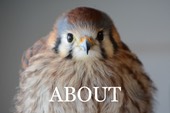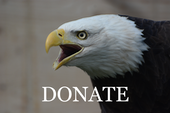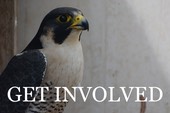Bald Eagle 17-084

On Monday, February 27 we received a call about a Bald Eagle on the ground near Mesa, WA. With the help of the Washington Department of Fish and Wildlife and volunteer Valerie, the eagle was in Pendleton by mid-day. He was showing signs of ingested lead toxicity, lead poisoning caused by eating an animal that has been shot with lead ammunition.
The initial reading on our LeadCare II machine was “high,” the result when the blood lead level is above the upper limit the machine can detect, 66 micrograms/deciliter. The machine’s manufacturer has provided a protocol for diluting high samples in order to determine the lead level. We diluted the sample, repeated the test, and the result was again “high.” By diluting the sample a second time, the machine was able to give us a number. The eagle’s blood lead level was 622 micrograms per deciliter. That is 30 times the level of lead considered to be toxic in raptors, 20 mcg/dl, and the highest lead level we have ever documented.

Although we chelated the eagle aggressively, reducing the blood lead level to 105 mcg/dl in five days, he could not overcome the toxic effects of lead, and died Friday evening. 17-084 was the third Bald Eagle admitted in 2017 and the third eagle this year to have a toxic amount of lead in his blood.
There is no safe level of lead for humans or wildlife. Even small amounts of lead can effect the nervous system, cause anemia and high blood pressure. Children are especially susceptible to its toxic effects. It can permanently lower IQ and effect learning ability. Lead has been removed from paint, gasoline and plumbing because it is so toxic.
The solution to lead toxicity is simple, use non-lead ammunition. Non-lead ammunition performs as well or better than lead ammunition. Eating game shot with non-lead ammunition is safer for your family. Hunting with non-lead ammunition prevents secondary poisoning of wildlife like Bald Eagle 17-084. For more information, visit http://huntingwithnonlead.org/
Coyote Radiograph
This radiograph shows what happens to a high velocity lead bullet when it hits its target. Scavenging raptors feed off carcasses like this and are poisoned by the lead in the carcass.

Remember to Save the Date: March 18, 2017, 2 pm
The busy season will be here before we now it. Current volunteers, new volunteers and anyone who would like to find out more about being a volunteer, please join us at McNary Wildlife Refuge Welcome Center, 64 Maple St, Burbank, WA 99323, on March 18, 2017 at 2 pm. Learn what’s involved, ask questions, receive guidance and training and enjoy refreshments.
If you look closely at the photo below, you will appreciate the awesome shot that Toni captured as her husband, Don, released a female Sharp-shinned Hawk. Thank you Toni and Don!








